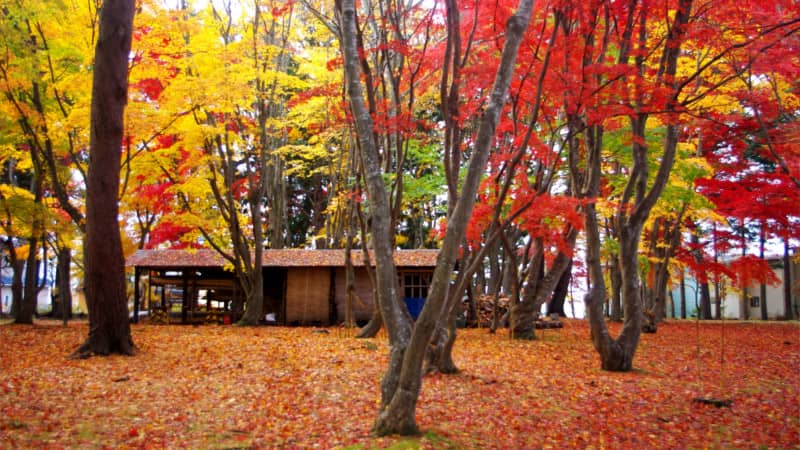Hakodate is on the southern tip of the Japanese island of Hokkaido. It is the third-largest city in the Hokkaido region.
The city is easily accessible from Tokyo and offers plenty to see and do. From a popular food market to stunning mountain views, there are many reasons to visit Hakodate.
This guide to Hakodate explains how to get there, what to do, and the best attractions nearby.
How to Get to Hakodate by Train
You can reach Hakodate easily by train using your Japan Rail Pass.
From Sapporo—The Super Hokuto Limited Express train connects Hakodate to Sapporo station in around 3.5 hours.
From Tokyo—The Hokkaido Shinkansen route connects Honshu to Hokkaido. The bullet train departs Tokyo station (Tohoku Shinkansen) and arrives at Shin-Hakodate Hokuto station. The journey takes around 4 hours. There is a 20-minute shuttle train service, the Hakodate Liner, between Shin-Hakodate Hokuto station and Hakodate Station.
Hakodate can also be reached by plane. There are direct flights from Tokyo to Hakodate Airport (HKD). There are also non-stop flights to Osaka, and Nagoya.
Getting around Hakodate: Public Transportation
The main mode of transport for sightseeing in Hakodate is the tram. Trams run all day, departing every 6 to 12 minutes, and stop at most main tourist stops. One-day tram passes can be purchased from the Tourist Information Center.
Bus services operate in Hakodate. Buses also provide direct access to tourist attractions in Hakodate. For example, there is a shuttle bus service from Hakodate Station to Mt. Hakodate Ropeway.
What to Do in Hakodate
There is plenty for tourists to see and do in Hakodate. Here are a few of the highlights when visiting this port city.
Start the day at Hakodate morning market
Hakodate Morning Market is one of the most well-known attractions for visitors to the city. You shouldn’t miss out on visiting the morning market during your stay in Hakodate.

The popular food market has around 250 stalls selling delicacies from Hakodate and Hokkaido. You’ll find fresh seafood, vegetables, fruits, and sweet treats.
It opens early in the morning. For the most memorable experience, tourists are recommended to eat breakfast at one of the fish restaurants.
The Morning Market is located close to Hakodate Station.
Views from the top of Mount Hakodate
Mt. Hakodate boasts incredible views across the city and bay. Most people use the Mt. Hakodate Ropeway, a cable car service that takes you up the mountain in 3 minutes. You could also hike.
Mt. Hakodate offers fantastic photo opportunities. Many tourists go in the evening to see lights illuminating the city.
Goryokaku fort and nature park
The site of Goryokaku Fort is open to visitors as a nature park. The fort is star-shaped, designed this way to avoid blind spots during an enemy invasion.

The park can be visited all year round. It is particularly beautiful during the spring when you can see the world-famous cherry blossoms. To view the fort from above, climb the 107-meter tall Goryokaku Tower next to the park.
Hakodate Bay Area and harbor
The Bay Area opposite Hakodate is a great place to enjoy views of the harbor, shop, and visit a café.
The Bay Area is characterized by its row of red-brick buildings. Once used as warehouses, they have been converted into a shopping mall where you can pick up some unique Hakodate souvenirs.
The Bay Area is also home to cafés and pâtisseries to try some typical Hakodate desserts.
Yunokawa Onsen hot spring resort
Yunokawa Onsen is about 30 minutes by car from Hakodate station. It is a well-known onsen in Japan.
It has a history stretching back more than a thousand years, and has retained a lot of the traditional culture.
The hot spring resort is visited by tourists and people from across the country and has been frequented by writers and artists for decades
When to Visit Hakodate
Hakodate is surrounded by water on 3 sides and, as a result, experiences mild, humid weather conditions.
Each season offers tourists a different experience. You can visit the city at any time of year, here is a brief guide to the weather you can expect in spring, summer, autumn, and winter in Hakodate:
Spring in Hakodate—March to May

This is the time of year to visit Hakodate if you want to see the cherry blossoms in bloom. Be sure to check the cherry blossom forecast for the region, so you don’t miss out.
The average temperature in Hakodate in spring is 46ºF (8ºC), long-sleeved clothing and a jacket are required.
Summer in Hakodate—June to August

Many people consider summer to be the best time to visit Hakodate. The weather is warm, with daily average temperatures of 68ºF (20ºC).
As this is a popular time to visit Hakodate, it’s advisable to make reservations in advance.
Autumn in Hakodate—September to November

Temperatures start dropping in Hakodate from September. The average daily temperature falls to around 55ºF (13ºC).
Parks in Hakodate look beautiful in autumn as the leaves turn golden. It is an enjoyable time to be in the city.
Winter in Hakodate—December to February

Winter weather in Hakodate is cold, with heavy snowfall throughout the season. Tourists visit Hakodate in the winter to take part in winter sports activities. The thick snow also makes Hakodate particularly scenic at this time of year.
You’ll need to pack warm clothing to visit Hakodate in December, January, or February.
How Many Days to Stay in Hakodate
Tourists are recommended to spend at least 2 days in Hakodate. A couple of days are required to visit all the top visitor attractions and enjoy the city.
It is worth spending the evening in Hakodate to have the chance to go up Mt. Hakodate as night falls.
You can combine a trip to Hakodate with visiting the rest of Hokkaido. Other places to visit on the island include Otaru, Noboribetsu, Sapporo, and Shiretoko.
